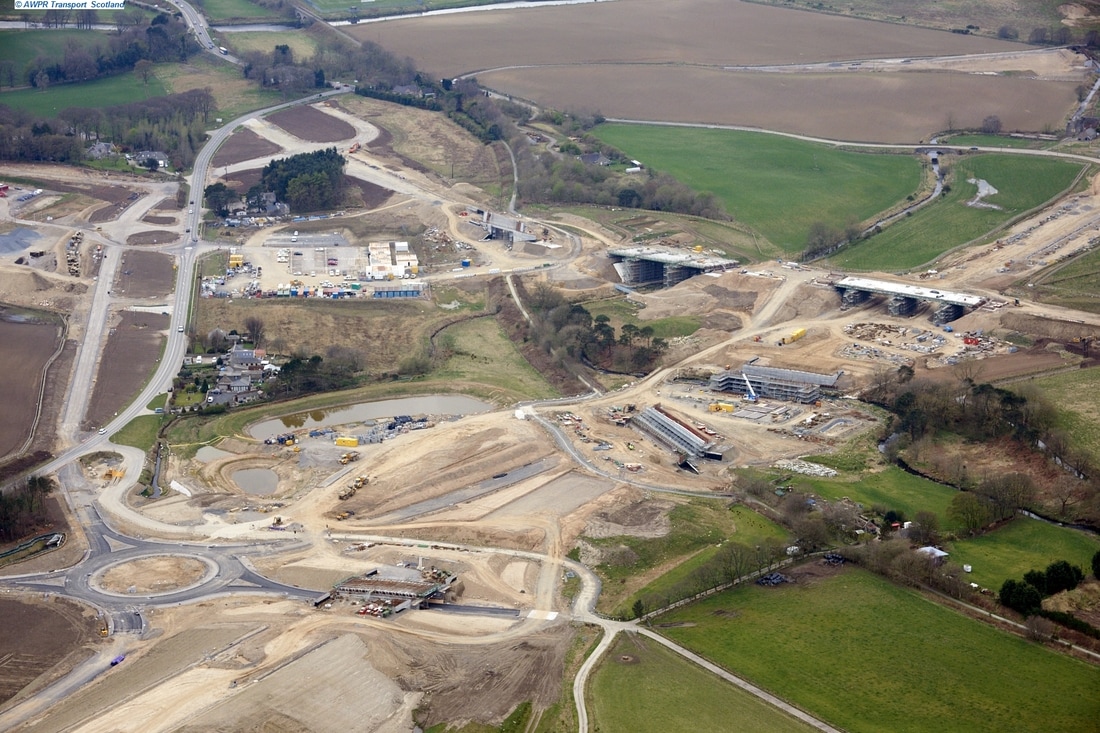Economic benefits of £745m Aberdeen by-pass highlighted

Around 50 per cent of traffic has shifted from Aberdeen city onto the new Aberdeen Western Peripheral Route since it fully opened in February – easing congestion and improving air quality in the north east and paving the way for an extra £6 billion in economic benefits and the creation of around 14,000 jobs in the north east over the next 30 years, First Minster Nicola Sturgeon has said.
Initial monitoring by Transport Scotland in the months since the opening of the AWPR has found key journey times have been reduced by half, even during rush hour, through the 36-mile AWPR route between Stonehaven and south of Ellon.
In a speech to north-east business leaders Ms Sturgeon highlighted the economic benefits of the £745 million project.
She said: “The AWPR has brought huge benefits to the north-east with these initial findings showing both journey times and congestion have improved over the last few months. Its success is a clear sign that the north-east is an attractive place to work and do business. It is expected to generate an extra £6 billion in economic benefits and create around 14,000 jobs over the next 30 years.
“As a result of the AWPR, vehicles that were previously sitting in nose-to-tail traffic and causing pollution have now shifted, leading to lower emissions in the city. This has the potential to improve air quality for around 75,000 homes and will improve the environment for pedestrians and cyclists in Aberdeen city.
“The AWPR is also enhancing public transport connections by providing better local access and more reliable services, showing the immense transformation that infrastructure can bring to people’s daily lives, the quality of their environment and the economy as a whole.”
Jennifer Craw, chief executive of private sector economic leadership body Opportunity North East (ONE), said: “The AWPR Aberdeen bypass has transformed the movement of goods and people in the region – and we have waited over 40 years for the investment. Journey times from the north to the south of the city have reduced by the predicted 20 minutes resulting in reduced fuel consumption, congestion and emissions.
“North-east Scotland businesses contribute more than 20 per cent of Scotland’s total export value and it is important that we maintain the momentum in infrastructure investment to support international growth in our key sectors with enhanced harbour and port facilities, air connections, and road and rail links.”
Russell Borthwick, chief executive of Aberdeen & Grampian Chamber of Commerce, said: “We now have our Aberdeen Western Peripheral Route and it is already enhancing connectivity across the entire region, transforming journey times, reducing business costs and improving productivity and quality of life. In turn, this will provide opportunities for business as well as opening up new markets and audiences for our transformed international airport and The Event Complex Aberdeen (TECA).
“As well as this, it will make the region more accessible to visitors as we build towards the vision of being a £1 billion tourism economy by 2023. And, of course, it helps bring closer the Masterplan ambition of creating a more pedestrian-friendly city centre.
“This investment has delivered a significant competitive advantage for our region. It’s now up to us to make the most of it, as well as looking ahead to ensure our physical and digital infrastructure is fit for purpose now and in the future, enabling us to deliver our economic strategies and the renaissance region ambition.”






